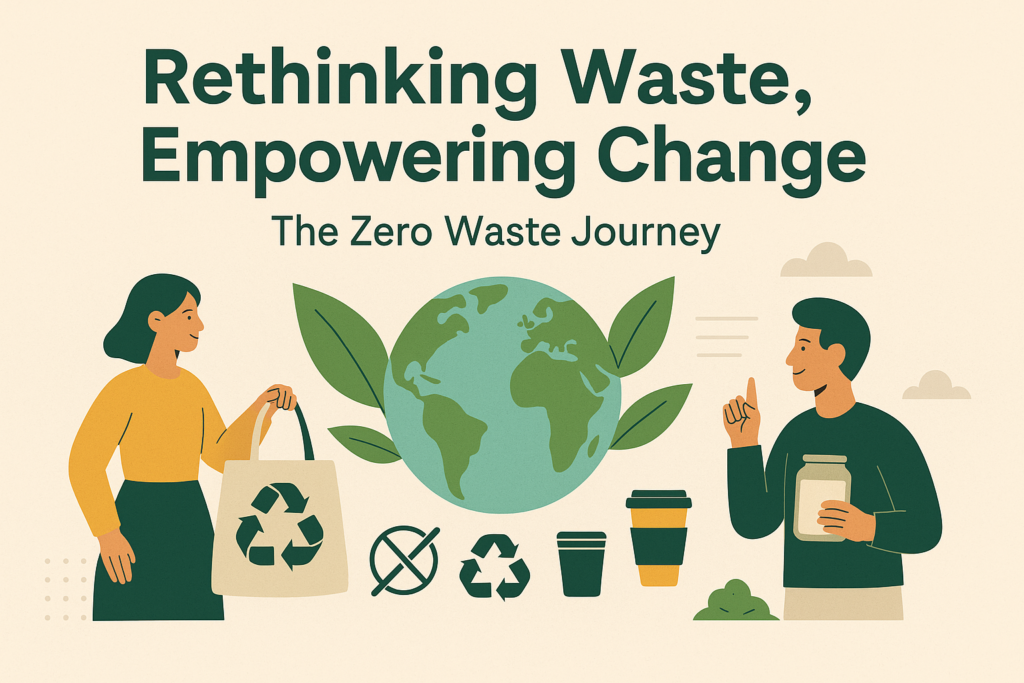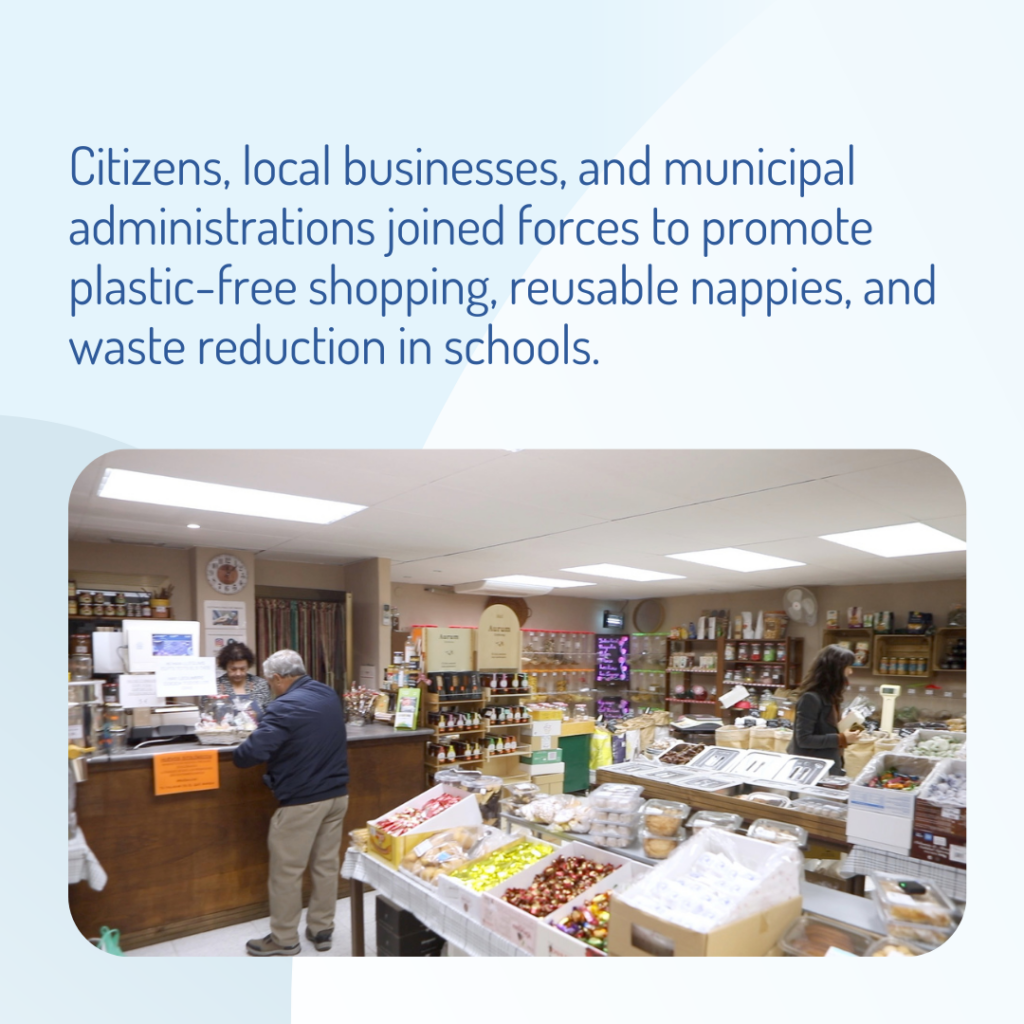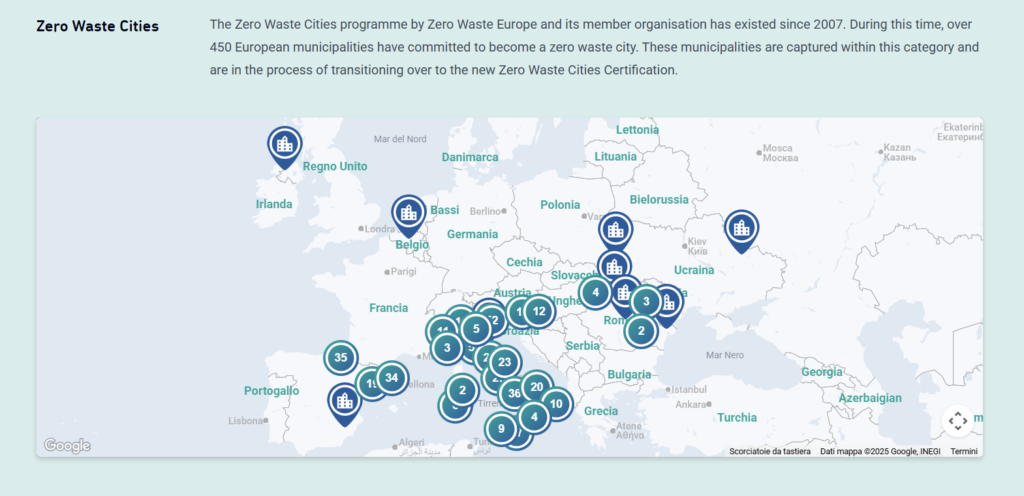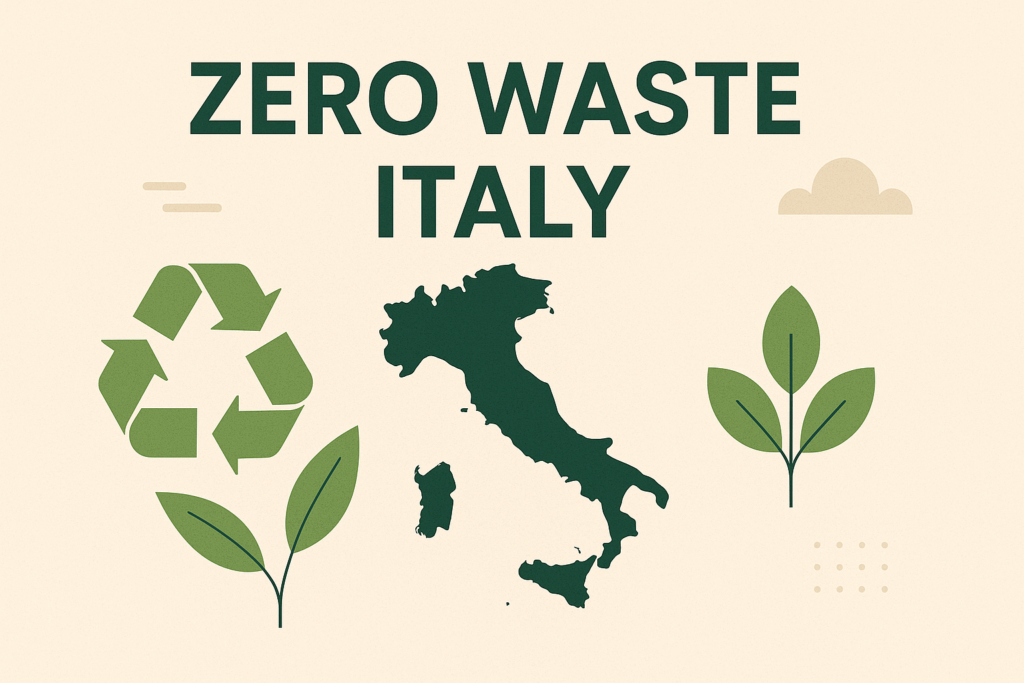
The Zero Waste movement is an environmental, social, and economic approach that aims to eliminate waste production through the sustainable management of resources, inspired by natural cycles where every by-product becomes a resource.
 Core Principles
Core Principles
Often summarized by the 5Rs rule:
- Refuse – Say no to what you don’t need (e.g., unnecessary packaging, promotional gadgets).
- Reduce – Minimize what you consume (e.g., conscious purchases).
- Reuse – Use items again instead of throwing them away (e.g., containers, clothes, objects).
- Recycle – Recycle only when reuse and reduction are not possible.
- Rot – Compost organic waste.
 Goals
Goals
- Reduce the environmental impact of consumption.
- Encourage individual and collective responsibility.
- Promote circular economic models, as an alternative to disposable culture.
- Defend environmental justice, ensuring waste is not offloaded onto vulnerable communities.
 Tourism Perspective
Tourism Perspective
In the context of tourism, the Zero Waste definition means rethinking how we design, host, and experience a destination: from the choice of materials used in accommodations and services, to mobility, communication, and event planning—to minimize environmental impact and maximize local value.

Historical Overview
The Zero Waste movement has its roots in the 20th century, but only became a structured global movement starting in the 1990s. Below is an overview of key milestones:
📌 Origins and Early Development
- 1970s–1980s: The first strong critiques of consumer society and throwaway culture emerge from the environmental movement, especially in the US and Europe. Recycling, composting, and hazardous waste become recurring themes.
- 1995: The term “Zero Waste” is systematically adopted by the California-based company Zero Waste Systems Inc., founded by Paul Palmer to promote the reuse of chemicals in laboratories.
🌍 Key Global Milestones
- 2000: The Zero Waste International Alliance (ZWIA) is founded, providing a formal definition of “Zero Waste”:
“The design and management of products and processes to systematically avoid and eliminate the volume and toxicity of waste and materials…” - 2002: The city of Canberra (Australia) adopts a plan to become Zero Waste by 2010—one of the first institutional examples.
- 2008–2010: Individual activism gains traction, with emblematic cases:
- Bea Johnson, a French woman living in the US, launches the blog “Zero Waste Home” (later a book in 2013), documenting her family’s lifestyle that generates only one jar of waste per year.
- Lauren Singer, with her blog “Trash is for Tossers”, becomes a public figure in the movement.
- Bea Johnson, a French woman living in the US, launches the blog “Zero Waste Home” (later a book in 2013), documenting her family’s lifestyle that generates only one jar of waste per year.
🇪🇺 European and Italian Initiatives
- 2013: The association Zero Waste Italy is founded by Rossano Ercolini, who wins the Goldman Environmental Prize the same year for leading the opposition to an incinerator project in Capannori (Tuscany)—which becomes the first Zero Waste municipality in Europe.
- 2015: The European Union adopts its Circular Economy Action Plan, which, while not explicitly referencing Zero Waste, promotes aligned practices such as waste reduction, repair-friendly design, and recycling, aiming to phase out the linear economy model.

Zero Waste Movement from 2015 to 2025: A Decade of Evolution
🔹 2015: A Political Turning Point
- The European Union launches its first Circular Economy Action Plan, promoting:
- Waste reduction.
- Eco-design and product durability.
- Incentives for prevention and reuse.
- Zero Waste principles begin to appear in urban planning and local policies across Europe.
🔹 2016–2018: Urban Expansion and Civic Engagement
- Various cities (e.g., Barcelona, Ljubljana, San Francisco) adopt Zero Waste strategies.
- The movement gains visibility thanks to social media and influential figures like:
- Bea Johnson (“Zero Waste Home”)
- Lauren Singer (“Trash is for Tossers”)
- Local grassroots initiatives flourish: bulk stores, reuse markets, community repair projects, Zero Waste festivals.
🔹 2019–2020: Climate Emergency and Zero Waste
- The movement connects with global climate protests (Fridays for Future).
- Waste management is recognized as a key component in climate mitigation (linked to emissions, energy use, and pollution).
- The number of Zero Waste Cities in Europe grows rapidly under the coordination of Zero Waste Europe (over 500 municipalities involved by 2020).
🔹 2020–2021: Pandemic Challenges
- COVID-19 temporarily reverses some progress:
- Widespread return to single-use plastics and packaging.
- Restrictions on bulk buying and refillable containers.
- However, the crisis strengthens public awareness on consumption, waste, and environmental resilience.
- Solidarity initiatives emerge: mutual aid, repair cafés, community fridges, home composting.
🔹 2022–2024: Regulation and Innovation
- The EU launches the Circular Economy Package 2.0, including:
- Regulation on packaging and packaging waste (PPWR).
- Measures to reduce food and textile waste.
- More companies adopt Zero Waste manufacturing models (in fashion, food, cosmetics).
- Growth of refill stations, online bulk shops, and cooperative circular services across Europe.
🔹 2025: The Movement Today
- Zero Waste becomes part of broader climate and ecological transition strategies, adopted by public institutions and businesses.
- The approach is increasingly integrated and systemic, involving:
- Circular design
- Local education programs
- Citizen and tourist engagement
- Impact assessment and waste prevention metrics are now standard indicators in funded projects.

Highlights from Italy (2015–2025)
- Zero Waste Italy continues to support municipalities like Capannori, Parma, Treviso, and Trento.
- Strong collaboration between citizens, schools, and local governments.
- Many European-funded projects (LIFE, Horizon, Interreg) include Zero Waste tourism, education, and community initiatives.
Waste management crises in some regions (e.g. Lazio, Sicily, Campania) highlight the urgency for circular, decentralized models.
In Summary
Between 2015 and 2025, the Zero Waste movement evolved from an alternative lifestyle to a structured strategy influencing policies, consumption habits, and economic models.
It is now recognized as a key driver of sustainability, resilience, and community empowerment.
Sources
🔹 Institutional and Regulatory Sources
 European Union – Circular Economy and Waste
European Union – Circular Economy and Waste
- Circular Economy Action Plan (2020) – EU Green Deal
https://ec.europa.eu/environment/circular-economy/ - Packaging and Packaging Waste Regulation (PPWR)
https://environment.ec.europa.eu/publications/proposal-packaging-and-packaging-waste_en - EU Waste Framework Directive
https://eur-lex.europa.eu/legal-content/EN/TXT/?uri=CELEX:32008L0098
🔹 International Zero Waste Networks
🌍 Zero Waste International Alliance (ZWIA) – Definition and Principles
https://zwia.org/standards/zero-waste-definition/
Contains the official definition of Zero Waste, along with international guidelines and standards.
 Zero Waste Europe – Projects, Cities, Case Studies
Zero Waste Europe – Projects, Cities, Case Studies
Central organization for the European movement: includes directories of Zero Waste cities, policy papers, and thematic dossiers (tourism, textiles, plastics, events).
📘 Zero Waste Cities – European Program for Municipalities
Support initiative for cities and regions committed to Zero Waste pathways.
🔹 Italian Sources
 Zero Waste Italy – Italian Zero Waste Network
Zero Waste Italy – Italian Zero Waste Network
https://www.rifiutizeroweb.it/
Founded by Rossano Ercolini. Includes examples of best-practice municipalities, school initiatives, participatory projects, and technical documentation.
Goldman Environmental Prize to Rossano Ercolini (2013)
https://www.goldmanprize.org/recipient/rossano-ercolini/
🔹 Case Studies, Activists, and Awareness
👩💼 Bea Johnson – Zero Waste Home
Foundational testimonial of the home-based Zero Waste movement, with daily practices and tools for families and businesses.
🔹 Data and Reports
♻️ Global Waste Index (by Sensoneo, 2022)
https://www.sensoneo.com/global-waste-index/
Ranks countries by waste management performance.
♻️ OECD – Waste Management and Circular Economy
https://www.oecd.org/environment/waste/
Reports, comparative data, and policy analysis on waste management in OECD countries.
🔹 Other Useful Materials
Ellen MacArthur Foundation – Circular Economy
https://ellenmacarthurfoundation.org/
Key reference for understanding the economic and systemic context of the Zero Waste movement.
ISPRA – Urban Waste Report in Italy
https://www.isprambiente.gov.it/it/pubblicazioni/rapporti/rapporto-rifiuti-urbani
Annual data on municipal waste production and management in Italy
Sara
Would you like to subscribe to my newsletter? In English, I am using the LinkedIn newsletter. I want to use it because I understand more about who has subscribed via the LinkedIn profile. Here is the link: https://www.linkedin.com/newsletters/7107445901593313280/